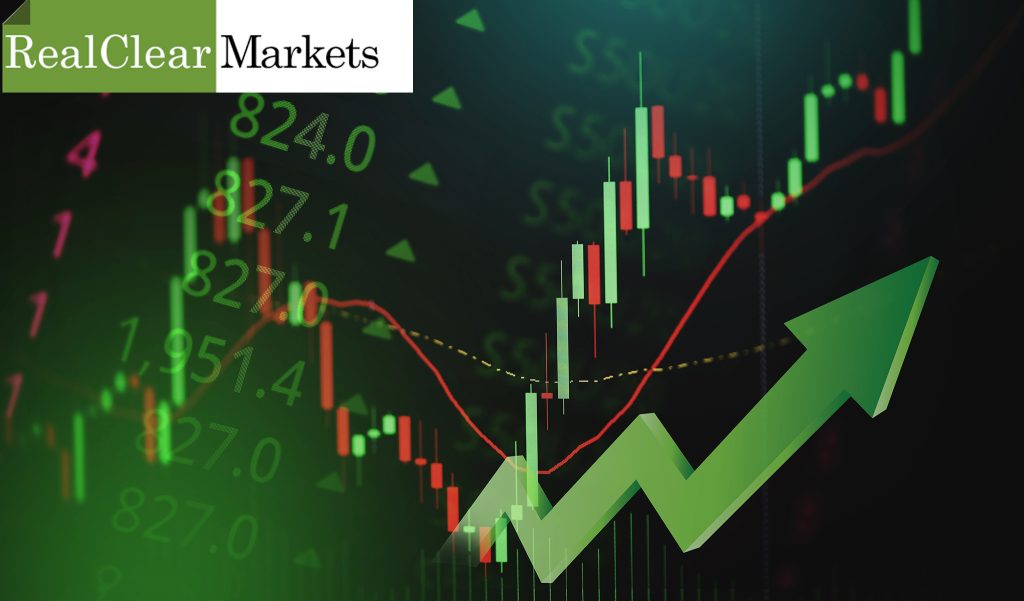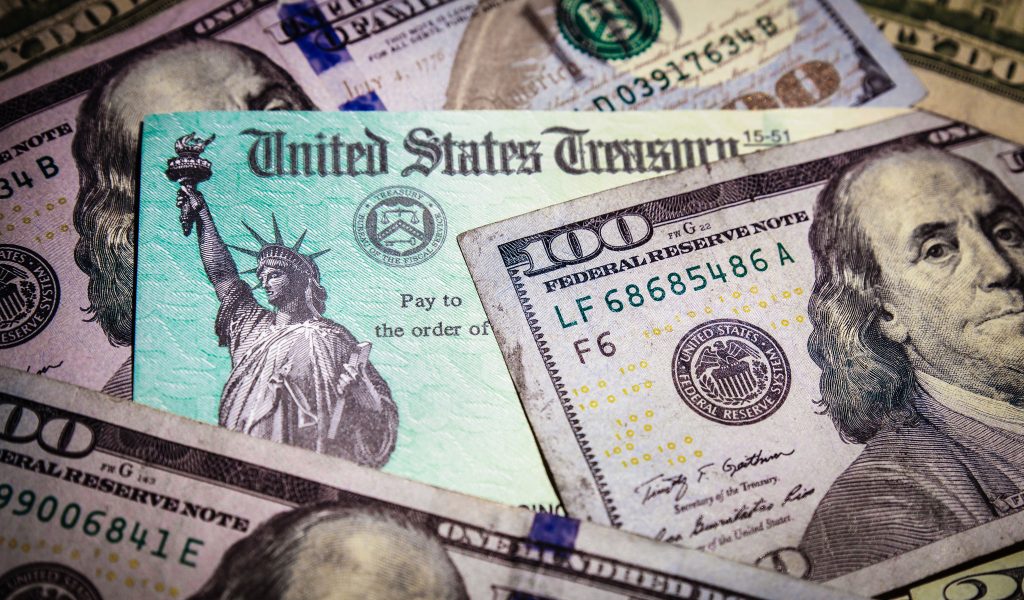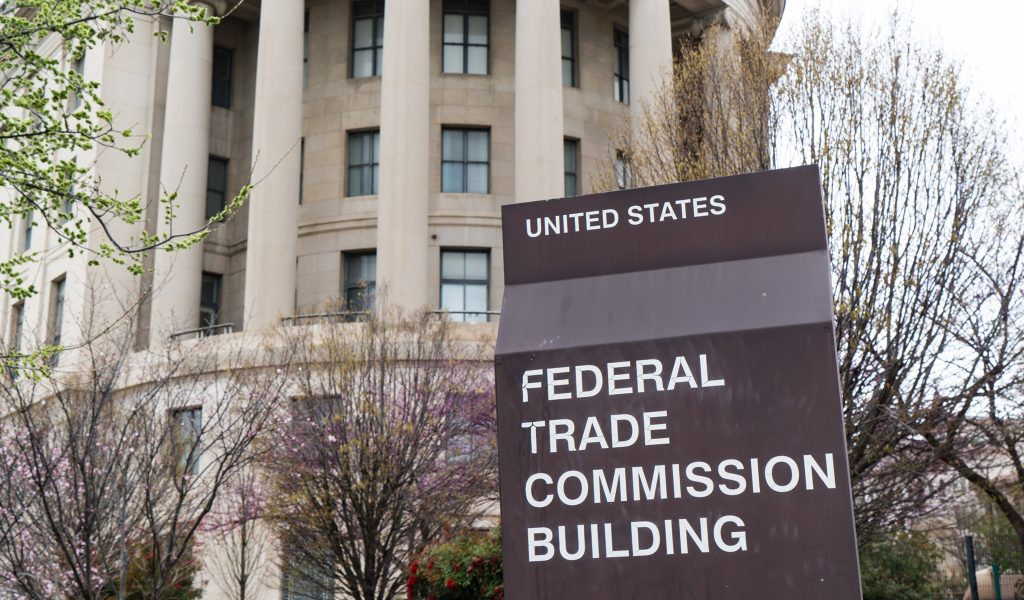In a recent Family Guy episode, Meg Griffin is told by her psychiatrist that he only accepts crypto as payment. Meg’s virtual wallet is populated by Bitcoin, Doge, Ethereum and other famous names, only for the shrink to change his mind by the second about which crypto concept he’ll accept from his patient.
It probably insults readers to translate the scene, but the implied point was that if you’re unhappy with the price of your crypto coin, just wait half a second and it will change drastically. Cryptocurrencies are the picture definition of volatile, thus rendering them highly risky for producers to accept in return for goods, services, or labor rendered. Put more bluntly, the most prominent names in the crypto space at the moment are junk as “money.”
The extraordinary turbulence that defines cryptocurrencies came to mind regularly while reading Michael Lewis’s crucial new book, Going Infinite: The Rise and Fall of a New Tycoon. For those who haven’t been living under a rock, Lewis’s book is about FTX founder Sam Bankman-Fried. Bankman-Fried (SBF from now on) famously created a crypto exchange in the form of FTX, along with a hedge fund (Alameda Research) that operated (among other things) as a market maker on SBF’s nascent exchange.
About it, an argument could be made that once crypto proponents felt the need for a trading exchange to liquefy the movements of private forms of money, they’d already lost the plot. That’s the case because money, if it’s to exist as the exchange medium that has long defined money, should be the opposite of volatile. Put another way, truly good money wouldn’t be actively traded.
As Adam Smith so correctly and pithily put it long ago, “the sole use of money is to circulate consumable goods.” Which is why Smith would marvel at currency exchanges, whether for crypto or for government issued money concepts. Money is supposed to be quiet, or “low entropy” in the words of George Gilder. If a currency is being actively traded, that’s a sign that it’s volatile as a measure; meaning it to varying degrees lacks money-ness.
This looms large in trying to understand what happened to SBF and FTX. The crypto kings of past and present saw and see money as an asset that should generate returns. There’s your mistake, or misunderstanding.
The view here is that SBF, while clearly a genius, mistakenly viewed money as an asset. And this error is what needlessly got him in trouble. It’s what has him very sadly facing prison time. Which gets to the “crucial” aspect of Lewis’s book. My view is that it reveals SBF as not a crook or a fraud or any of the pejoratives attached to him. The hope is that many more people read Lewis’s book so that there can be more of a reasonably informed discussion.
This review will be different in the sense that it will lead with aspects of Lewis’s book that largely are at the back of it. It will lead with them as a way to make an early case that SBF is not guilty. My columns have from the beginning made a similar claim, but without the information taken from Going Infinite.
Let’s start with the state of FTX and Alameda Research when SBF’s hand was forced, and he was required to sign bankruptcy papers. At the time Alameda had on its books $14.6 billion of assets, but $8.8 billion in liabilities. There was money missing, hence the desire for financial types and pundits to try SBF in the public square. Notable about the assets, Lewis reports that a third were FTT coins, meaning the coins issued by FTX.
Here’s why your reviewer believes a mistaken understanding of money was at the heart of FTX’s problems. The popular view is that Alameda acted fraudulently by using FTX customer funds for purposes unrelated to customers buying and selling of crypto coins, but that was seemingly the point. The FTT tokens weren’t “money,” rather they were shares. As Lewis explained it, “The most important feature of FTT was that its holders were collectively entitled to roughly a third of the annual revenues of the FTX exchange.”
Keep the above in mind with Alameda’s assets upon its bankruptcy filing top of mind. A third were FTT coins that entitled owners to FTX’s profits. The latter indicates that owners of the FTT coins were either aware that their money held at the exchange wasn’t necessarily segregated, or perhaps that they expected it to be used in ways that the holder of a brokerage account at Merrill Lynch would not expect. The FTT coins were equity stakes in FTX, as opposed to money, and they became more valuable the more that FTX’s profits rose.
FTX’s profits rose to $500,000/day in 2018, but Lewis reports that FTX revenues rose to $1 billion by 2021. Is it any wonder then, that the value of FTT coins soared in concert with FTX’s profits? Pundits at times referred to formerly soaring FTT valuations as indications of the impossibility that is “easy money,” but in reality they derived their value from the growing prominence of FTX as an exchange.
Lewis indicates that initially FTTs cost 5 cents, then $1.50, and then Changpeng Zhao, the founder of Binance (another crypto exchange), “offered to buy a 20 percent stake in FTX for $80 million.” Based on Changpeng’s purchase it was apparent that SBF had parted too easily with the initial 350 million FTT tokens, but they once again plainly derived a lot of their value from the profitably of FTX such that it eventually became apparent that FTX sold itself too cheaply to Changpeng too. SBF eventually bought him out for over $1 billion.
This is a long way of saying yet again that the FTT coins were many things, none of them money. To see why, imagine if you’d borrowed in FTT when it was trading at $1.50, only to start paying back when the token reached $61. Imagine buying or selling with those same tokens in light of their volatility. Depending on when you transacted, you would either have made out big or lost big. This isn’t trade. Trade is products for products with money as the reasonably stable measure that facilitates reasonably equal exchange. The FTT tokens in no serious way fostered mutual exchange (products for products), and evidence supporting this claim can be found in the volatility of the FTT price.
At risk of annoying readers, FTT tokens quite simply were not money. They were equity stakes in the exchange that a lot of investors must have purchased well aware that the coins wouldn’t sit in some account, very carefully invested and loaned with eyes on minimal returns. Instead, an FTT token was a purchase of an unknown, boom or bust, future. This is a long way of asking a question along the lines of would SBF be in trouble now if, instead of selling “money” or whatever, FTX had simply sold equity shares. Repeat it over and over again, it’s not money if it’s an asset. Money is a measure of assets, in its traditional form it’s a stable measure meant to facilitate the exchange of assets, not an asset itself.
All of this brings up questions about FTX’s eventual collapse. Was it rooted in fraud or stolen money, or did the broad market for crypto go south, thus taking FTX with it? This rates asking considering another point that Lewis made. In his words, “The $8.8 billion that should not have been inside Alameda Research was not exactly a rounding error. But it was, possibly, not enough to worry about.” Lewis’s point wasn’t to dismiss missing money, but that depending on the day, “Alameda Research had a net asset value of $100 billion.” About this, none of it is meant to excuse brokerages of any kind operating as though customer funds “belong to it,” but it is to point out that customer funds at FTX to a high degree were FTT tokens that once again derived their value from Alameda and FTX operating as though customer money “belonged to it.” In other words, absent active use of customer money, investor interest in FTT would have been very limited. Yes, coin owners and customers were buying SBF’s genius.
Considering FTX the exchange, let’s also not forget that lucrative as crypto investing could at times be, the market was thin for these nascent coins that once again weren’t, and realistically aren’t, money. This is important with Alameda’s role as a market maker well in mind. Lewis cited the recollections of Constance Wang, a former FTX employee, who relayed to Lewis “how critical Alameda’s willingness to trade anything with anyone at any time had been to the successful launch of FTX.” Thought of another way, absent Alameda’s use of customer funds there’s no discussion of FTX in the first place because there’s no notable collapse. Importantly, the FTT token flavor of Alameda’s assets at the time of collapse indicates that investors wanted their money put to work. Again, the value of FTT tokens was rooted in profits born of Alameda acting as an active market maker for FTX.
What about the dollars in Alameda’s care that were not supposed to be there? Lewis writes that in “Sam’s telling, the dollars sent in by customers that had accumulated inside Alameda Research had simply never been moved,” and they hadn’t been moved not for nefarious reasons, but because “FTX had no U.S. dollar bank accounts” and it didn’t because it couldn’t get one. Alameda did have a bank account.
Some will point out that in order to trade on the FTX platform, and fulfill its role as market maker, that Alameda had to post collateral at FTX. Lewis reports that FTT tokens were the value posted, and some might find that shady in retrospect? But don’t forget that demand for those tokens was formerly enormous. People are presently judging FTX, Alameda and SBF based on the end result, as opposed to what they were.
This is important in light of who invested in the enterprise. While early on SBF found well-to-do effective altruists (more on that in a bit), Lewis notes that “between the summer of 2020 and the spring of 2021, in four rounds of fundraising, they [FTX] sold roughly 6 percent of the company for $2.3 billion. Roughly one hundred fifty [emphasis: Lewis] different venture capital firms invested.”
The number of VCs who bought stakes in FTX without getting so much as a board seat (Lewis writes that SBF “had no board”) requires comment simply as a reminder to readers all-too-willing to dismiss out of hand the very notion that SBF could be anything but insanely guilty of fraud. One hundred fifty VCs calls such certitude into question. Seriously, can money be this dumb? Color your reviewer skeptical, particularly considering that the largest investor at $200 million was arguably the world’s best VC, Sequoia.
What about the main players in FTX/Alameda like Caroline Ellison, Nishad Singh and others. It’s popular to say that they had an interest in moving money from FTX to Alameda for improper usage, but as Lewis writes, “Nishad owned a big chunk of FTX and none of Alameda Research. Ditto Caroline, who ran Alameda Research, but owned shares only in FTX.”
Which brings us to the missing money. Lewis reports that by the end of June of 2023, $7 trillion of the $8 billion+ in liquid assets had been recovered. Lewis asks “Where did all the money go? The answer was: nowhere. It was still there.” Lewis adds that SBF’s explanations for the missing money, explanations conveyed in truncated fashion in this write-up, remained “irritatingly difficult to disprove.”
About my analysis, financial minds exponentially more capable and wiser than I am will hopefully weigh in too. My analysis of Lewis’s book is that SBF was convicted in public long before going to trial (could any juror seriously enter the courtroom unbiased given the publicity surrounding this story?), and this is unfortunate. A read of Lewis’s account is to be skeptical about how public opinion was shaped, along with a trial that subsequently has SBF facing prison time.
But even without Going Infinite, my expressed view has long been that the world paradoxically needs more SBFs, not fewer. It’s the oddballs pursuing the impossible, and who view the present as unsatisfactory, who drive progress. In which case, thank goodness for the myriad VCs willing to match the oddballs with capital. That VCs are willing to fail, that it’s their business model to back myriad failures in pursuit of the rare success, is the stuff of wondrous commercial leaps without which economic growth would be a fraction of its present self.
Why didn’t the VCs watch SBF more closely? In answering this question, let’s assume for a moment what I’m at least not yet willing to concede: that SBF was a crook and a fraud. If so, it’s once again odd that so many successful investors skilled at sniffing out the frauds were tricked by someone whose daily uniform was (per Lewis) was “cargo shorts, a T-shirt, limp white socks and ratty New Balance sneakers,” but then it’s likely no reach to say that SBF’s oddities were what made him attractive to VCs desperately in search of an unknowable future.
Indeed, as Sebastian Mallaby wrote in The Power Law (my review here) about venture capitalists and those they invest in, “Reasonable people – well-adjusted people, people without hubris or naivete – routinely fail in life’s important missions by not even attempting them.” Absolutely! And this was why the Monday-Morning Quarterbacking about SBF by pundits eager to show they weren’t fooled by SBF one bit after the fact was so disappointing. Worse, the supercilious hindsight analysis was, more than most would admit, based on appearance. How could VCs have fallen for this unkempt mess? What the all-knowing missed is that what made SBF odd was arguably what appealed to VCs whose business model is based on matching the opposite with capital.
For those still not satisfied, consider the thinking of the great Peter Thiel in trying to understand why VCs perhaps didn’t or couldn’t watch SBF more closely. Mallaby writes that Thiel in particular believes that it “makes no sense to suppress idiosyncrasies,” that instead the proper approach to is to give wide latitude to the “arrogant, misanthropic” and “borderline crazy” given the basic truth that the highest returns will spring from minds least like the others. It’s a long way of saying that venture capital investing is as odd as the individuals VCs invest in.
In which case it’s easy to look at SBF in retrospect and ask what were investors thinking? Lewis himself, having watched SBF et al up close, asked the founder more than once why he directed something like $15 million to Shark Tank cast member Kevin O’Leary in return for positive social media commentary about FTX, and once again it all looks funny in the rear-view mirror. Well, of course. If you’ve been tapped by a venture capitalist, what you do isn’t going to look right to the 99.99999 percent of minds who don’t think like “borderline crazy” entrepreneurs.
Still, the arguably more important and educational point for readers would be to look at the 90%+ of investments by VCs over the years and decades that failed without much notice. The bet here is that readers would more often than not happen on what, at least on paper, would read as shockingly dim. Which is to be expected. The future is opaque, and the path to discovering it is paved with all sorts of ideas that will insult the typical eye with their strangeness.
Back to Lewis and Going Infinite, it’s once again difficult to read it closely while also thinking SBF guilty. Consider the description of SBF’s dress. It’s not just that he dressed in sloppy fashion, it’s that the clothes he wore were, according to Lewis, “basically the only clothes he owned.” Regarding money and women, and the historical truth that ambitious males have pursued wealth in order to appeal to women, Lewis reports that SBF “was chiefly interested in neither.”
Lewis writes that SBF’s “ambition was grandiose, but he wasn’t.” This is important in light of the view that he acted as a thief or a fraud. The problem with this description is that it presumes that material things or social acceptance were what got him up in the morning. No, they didn’t. Still, and with the latter in mind, the view here yet again is that “normal” people are judging SBF based on “normal” values. Yet he wasn’t nor is he normal. Consider Vogue editor Anna Wintour. To the normal among us, a call from Wintour would be a big deal. But when Wintour conducted a Zoom call with SBF with an eye on winning financial support from the then-billionaire for one of her benefits, SBF “didn’t really know who Anna Wintour was.” He played video games and answered e-mails while talking to her. Wintour is a beauty, yet SBF turned off her screen.
SBF did have an interest in directing wealth earned toward global problems, hence his embrace of “effective altruism.” It all sounds strange, including to your reviewer. But if readers are willing to accept Lewis’s reporting as credible, he writes in the book that effective altruism (EA) appeals in particular to “young men with a background in math or science.” Right or wrong, EA advocates believe that money can fix societal ills, at which point they “earn to give.”
My own view is the profit-motivated work that includes re-investing the profits is the ultimate societal gift, but that’s not the point. The point here as applied to SBF is that wealth creation was a means to an end. Lewis reports on p. 72 that at Jane Street Capital, the quant hedge fund where SBF worked before starting FTX, he earned $300,000 his first year out of MIT, then $600,000, then $1 million. Two pages later, Lewis writes that SBF had “given away most of the money he’d made on the trading floor to three charities” deemed most effective by EA types when it came to saving lives. Vacation? Lewis indicates that none was taken by SBF in the three years SBF worked at Jane Street.
Some critics of SBF point to his courting of politicians, Democrats in particular. They’ve used this to make a case that SBF was a crony capitalist, perhaps a starf****r, or just a raging left winger. It’s hard to take the first two seriously based on a read of Lewis’s book, while the last is arguably possible while missing the point. Lewis describes the political giving as profit-motivated. Please read on before jumping to conclusions, including the conclusion that your reviewer thinks highly of government intervention, regulation, or anything of the sort. Not at all. At the same time, those in the proverbial arena have to deal with the world as it is, not the one that opinion writers want it to be.
In which case, it’s useful to point out yet again that FTX and Alameda were on a roll. FTX was on the verge of becoming the world’s most prominent cryptocurrency exchange. And with the future bright, Lewis writes that SBF “set out to establish FTX as the world’s most regulated, most law-abiding, most rule-following crypto exchange.” Put another way, he courted the imprimatur of government. Readers don’t have to love this. Your reviewer doesn’t love it, while also cognizant that entrepreneurs in the past who failed to court government (think Bill Gates) paid dearly for not having done so. Who knows exactly what motivated SBF, but it’s hard to make a case that his courtship of politicians was ideological (he met with members of both parties) as much as it was motivated by establishing FTX as the most credible exchange, including one that was credible inside Washington.
The purists will hate the mere mention of winning credibility inside Washington, but as evidenced by the routine dragging of the commercially rich before Congress to “explain” their profits, a Washington strategy is sadly important for entrepreneurs. Consider SBF’s yet again in light of the fact that he was once worth tens of billions on paper. This kind of wealth attracts the attention of politicians, often in bad ways, at which point the successful must protect themselves. Or try to. Do you honestly think Jeff Bezos bought the Washington Post because he felt the newspaper would add to Amazon’s bottom line? In other words, if SBF’s former closeness to government bothers you, then your anger is misplaced. You don’t hate SBF, rather you hate big government. I share your disdain.
What about the fancy living situation in the Bahamas? About this, readers may or may not know that FTX and Alameda were initially based in Hong Kong. The latter became a problem simply because the Chinese government’s excessive reaction to the coronavirus made visits to the companies from outside the country extraordinarily difficult, along with travel away from Hong Kong for FTX/Alameda employees. The Bahamas were a solution to the authoritarian problem, after which FTX employee Ryan Salame purchased $250-$300 million worth of Bahamian real estate where employees would office and be housed. Excessive? Maybe, but once again we’re looking in the rear-view mirror. These purchases were made when the company was worth tens of billions of dollars. FTX was viewed by the Bahamian governor as a savior, so vast was the company’s perceived potential.
Coming to a close, it’s easy to look in hindsight at stupendous errors made by SBF, plus no less than top executive Nishad Singh observed to Lewis that SBF “was genuinely a terrible manager.” Alas, poor management skills aren’t a crime. Neither is failure. And given how information is created by failure in the technology world, there’s an argument that crypto’s long march toward credibility (I argue in my book The Money Confusion that carnage in the crypto space signals its staying power) has been paradoxically enhanced by SBF and what he achieved.
Indeed, as Constance Wang comments about meetings she took Sam Bankman-Fried to before he was SBF, and before FTX was FTX, “He was literally nobody, and nobody was taking him seriously.” This is so crucial. Progress is created by the seriously odd who pursue their vision in the face of enormous skepticism. The expressed worry here is that people, pundits and jurors have mistaken “borderline crazy” for crookedness, and that’s much more worrisome for the present and future than the perceived failings of opposite thinkers we need many more of.
Republished from RealClear Markets







